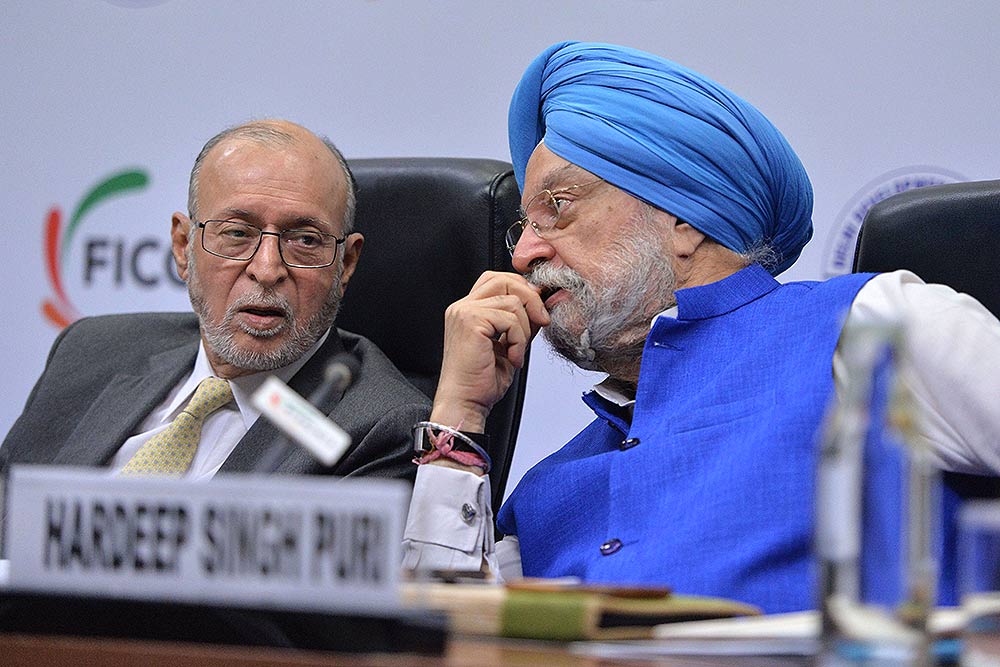Fearing that the redevelopment of eight neighbourhoods in the heart of south Delhi may choke a Ring Road already bursting at the seams with traffic, the Delhi government’s public works department has launched an urgent assessment study of key stretches of the Capital’s most crucial carriageway, according to government officials familiar with the matter.
These neighbourhoods — East Kidwai Nagar, Sarojini Nagar, Netaji Nagar, Nauroji Nagar, Kasturba Nagar, Thyagaraja Nagar, Srinivaspuri and Mohammadpur — are being redeveloped by NBCC and the Central Public Works Department (CPWD) primarily to add residential high-rises for government officials. They are located close to the Ring Road and were largely low-rise government flats.
The findings of the study will help the government devise a plan on how to tackle the traffic load on Ring Road, which, the PWD officials cited above say, is expected to “increase manifold” once these neighbourhoods get full occupancy.
Work on the projects has been put on hold after environmental activists moved both the Delhi high court and the National Green Tribunal seeking a stay because construction would have led to the felling of at least 14,000 trees in these neighbourhoods.
The Union minister for housing and urban affairs Hardeep Singh Puri said in June that the project designs would be reworked to avoid the mass cutting of trees.
Apart from the environmental impact of the projects, traffic remains the other big concern.“Sensing the gravity of the issue, around two weeks back, we have started a feasibility study of the traffic on Ring Road and surrounding areas between Sarai Kale Khan and Dhaula Kuan. But our main focus will be the stretches around these upcoming colonies,” said a senior PWD official who asked not to be named.
The Union government is proposing to build over 25,000 flats for government employees in the seven neighbourhoods in addition to the 4,700 flats that have already been built in East Kidwai Nagar near South Extension-1. Here, NBCC, which built the project, has provided underground parking for 10,000 vehicles while parking spaces for 70,000 vehicles has been allocated for the other seven colonies.
According to Delhi Traffic Police statistics, about 130,000 vehicles pass through the All India Institute of Medical Sciences (AIIMS) crossing on Aurobindo Marg every day, and another 300,000 vehicles ply between the Bhikaji Cama Place and Lajpat Nagar flyovers.
“After a thorough study, we will be able to suggest solutions, which may include the construction of elevated corridors or underpasses to give the commuters a smooth access to the airport, Dhaula Kuan, Vasant Kunj and other areas. We would be submitting the report in two months,” the PWD official said.
He added that the department had also sought details from CPWD and NBCC regarding any traffic assessment surveys that they had conducted during preparing a detailed plan for these colonies. NBCC and CPWD did not immediately comment on the matter.
Subhash Chand, the head of traffic engineering and safety division at Central Road Research Institute (CRRI), said that the capacity of Ring Road has almost saturated, so it is necessary to control direct access points on the arterial road to avoid further clogging. “If the entry and exit points of the colonies are directly opening on the Ring Road, the traffic situation will become worse. The traffic should either be routed through tributary roads before being merged on the Ring Road or it should come on the arterial road through ramps or tunnels starting within the colonies to avoid creating choke points on the road,” he said.
KT Ravindran, former director of the School of Planning and Architecture, said that the development proposals have to be toned down in a way that they become sustainable with infrastructure. “If you build more buildings and give more parking spaces, you will be inviting more traffic on roads. There is a need to think in terms of balancing this. The solution is to reconsider the development of colonies for a more balanced and liveable city,” he said.

देश में एक करोड़ यात्री प्रतिदिन कर रहे हैं मेट्रो की सवारी: पुरी ..

Union Minister for Petroleum and Natural Gas and Housing and Urban Affairs, Hardeep Singh Puri addressing a press conference in ..

Joint Press Conference by Shri Hardeep Singh Puri & Dr Sudhanshu Trivedi at BJP HQ| LIVE | ISM MEDIA ..
(3).jpg)
"I wish a speedy recovery to former Prime Minister Dr Manmohan Singh Ji. God grant him good health," Puri wrote. ..